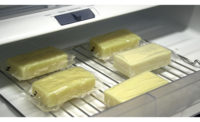Researchers from W. P. Carey School of Business at Arizona State University (ASU), Tempe, Ariz., will explore solutions to food waste through two unique research projects funded by the USDA’s Agriculture and Food Research Initiative.
The first project will test online marketplaces and mobile apps, which could help farmers, restaurants, retailers and households manage problems with day-to-day food waste.
For example, if a farmer has a box of ugly fruits or tomatoes that won’t sell in the supermarket because they’re too big for the grocery store display, he can use an online platform to let others know he has a surplus of food. Consumers then visit the app or website, select the items they want and the app coordinates delivery logistics and payment for the farmer.
“In Arizona and around the country, 18% of landfills is food waste, according to the EPA, and that may be a conservative number,” says Tim Richards, lead investigator and chair of agribusiness at the W. P. Carey School. “If we can figure out a way to better utilize food that would otherwise be wasted, we can minimize what goes into our landfills and more importantly make better use of the water that’s used to irrigate plants, saving 25% of our freshwater supply each year.”
ASU researchers are teaming up with Imperfect Foods, a San Francisco-based delivery company, to test market theories and demand conditions. In addition, the experiment will use 400 business school students at ASU and California Polytechnic State University, San Luis Obispo, Calif., to measure their use of food waste.
At the conclusion of the 2-year research period, investigators hope to be able to answer the following:
- How will these innovations impact farmers and consumer food prices?
- How will knowledge and information impact demand uncertainty among food manufacturers, family meal planning and food waste?
- Are stakeholders in the food supply chain receptive to dealing with collaborative enterprises?
A second ASU research project will put scan-based trading (SBT) under the microscope, which is used by food suppliers and retailers to retain ownership of the inventory in stores until the product is scanned at the register for check-out by the customer.
Suppliers, such as dairy producers or bakery vendors are responsible for keeping products in stock, while the retailer provides vendors with valuable shelf space. Any loss of product between delivery and checkout is typically the responsibility of the supplier, not the retailer.
“We hope to explore the causes of shrink and how to address it. Can suppliers do a better job at managing it? Or, do retailers need to have greater sensitivity, regardless of whether they own the inventory or not,” says Elliot Rabinovich, lead investigator, supply chain expert and professor of business at the W. P. Carey School. “It’s not finding out who’s at fault, it’s how do we work together.”
At the conclusion of the 2-year research period, investigators hope to be able to answer the following:
- How can SBT contracts support the objectives for both retailers, suppliers and the farmers who sell to them?
- Is there potential to minimize food waste through the supply system by using SBT?
- How does shrink at SBT stores and non-SBT stores impact wholesale and retail costs?



